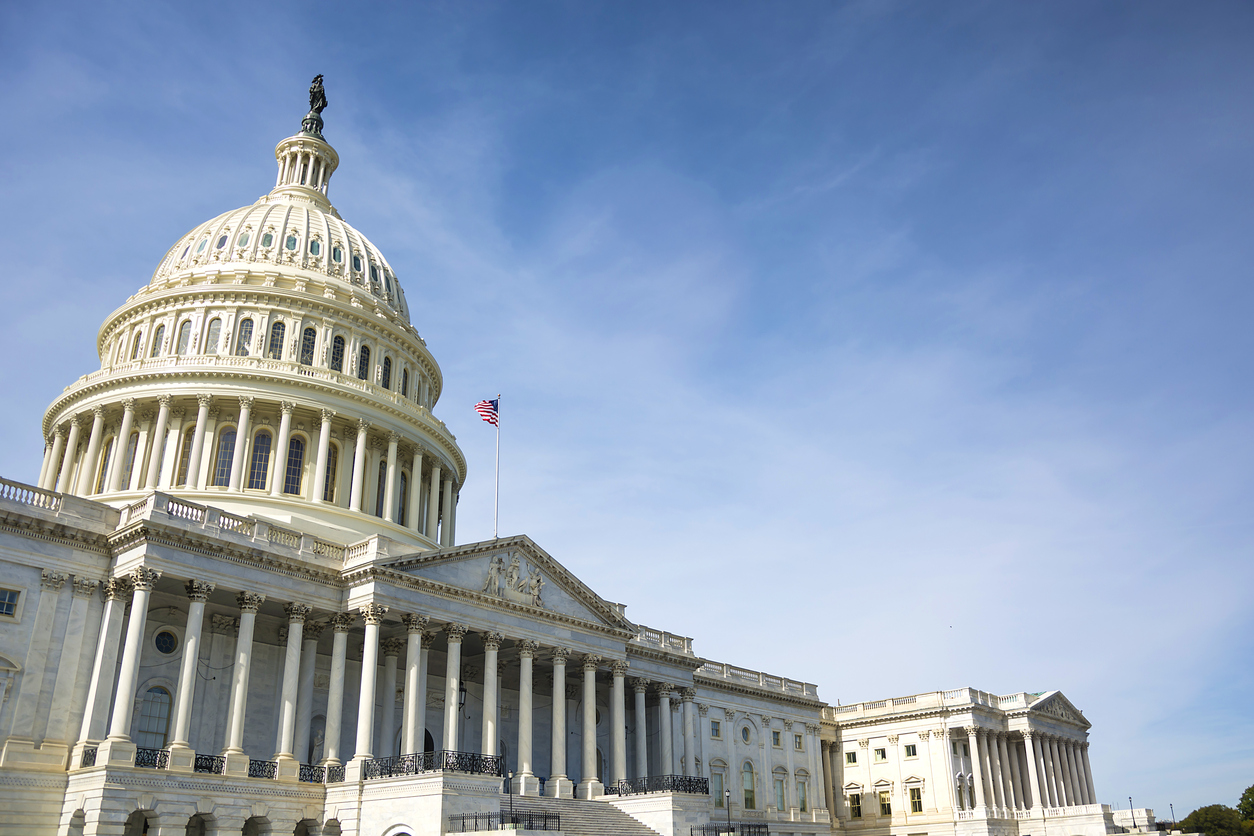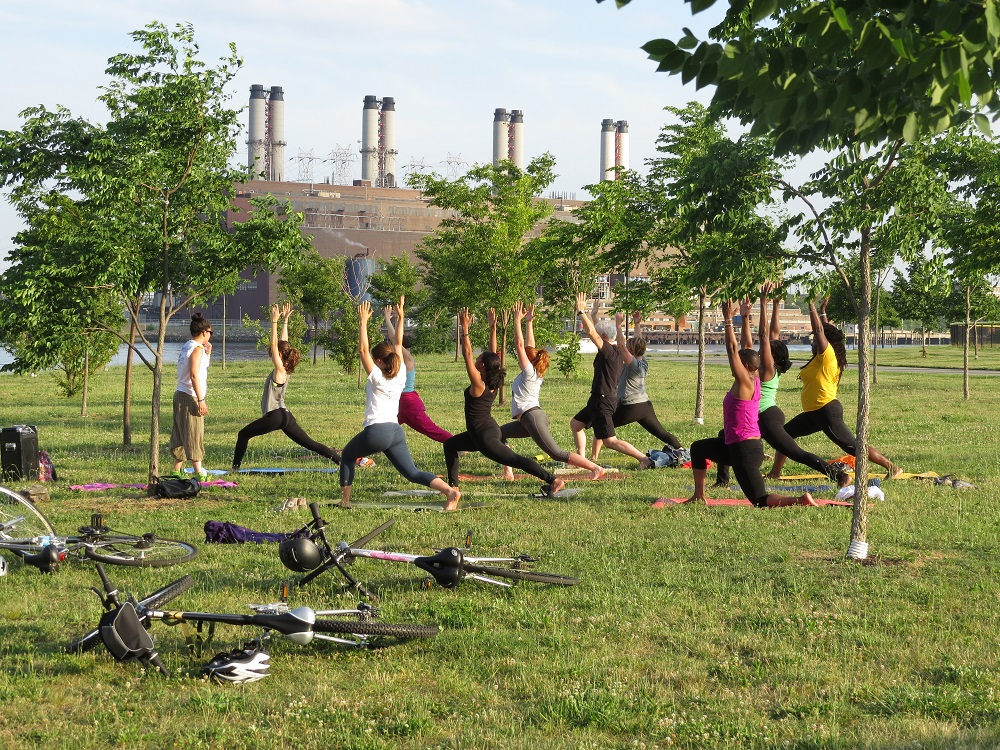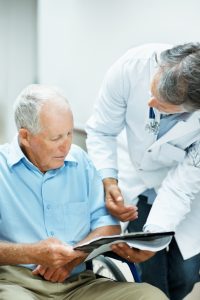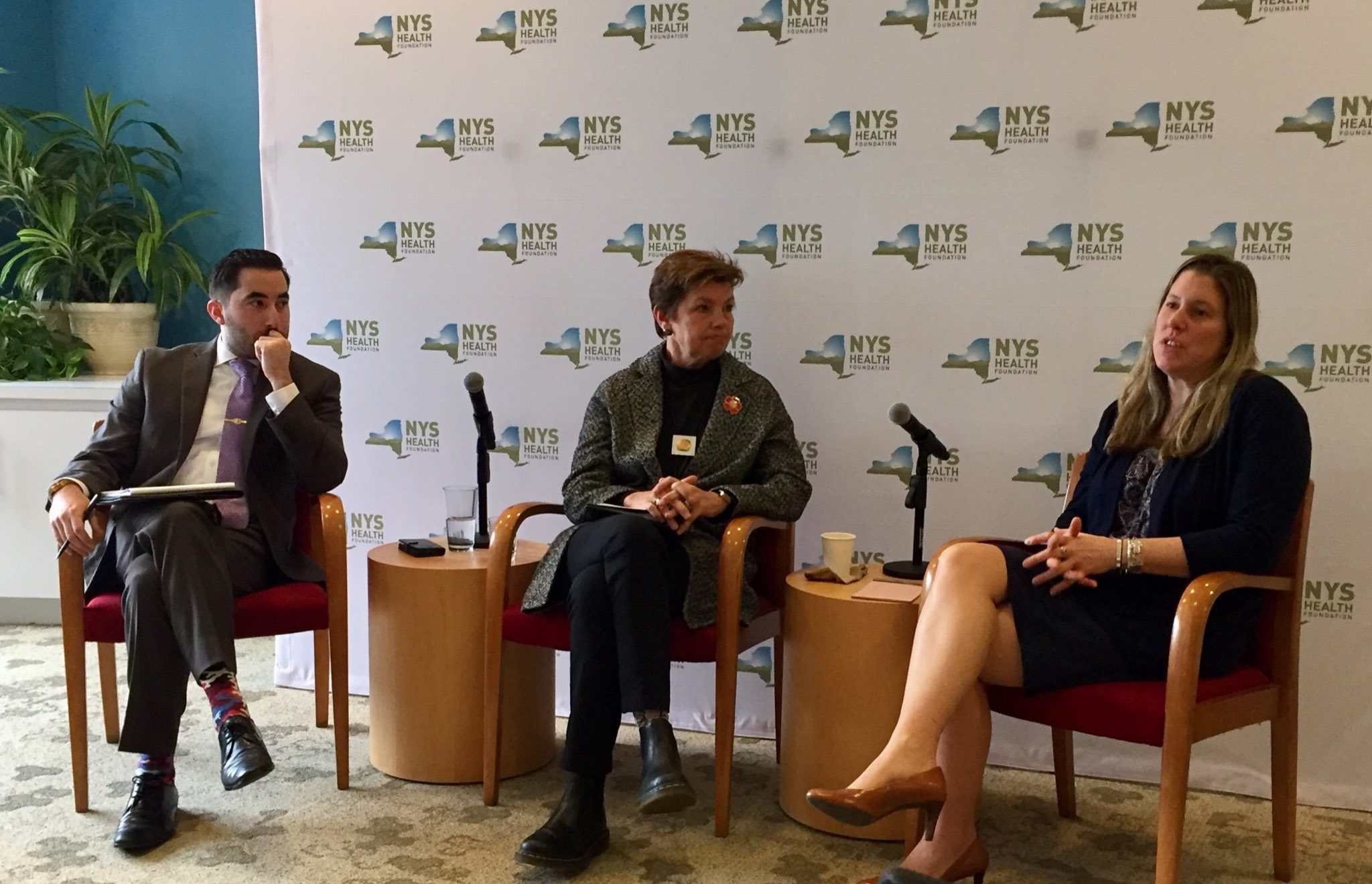This Year’s Highlights
We celebrated a major pro-health, pro-child, pro-equity victory this year, when New York City passed its 2017–18 budget and included permanent funding for universal free school lunch to all of the City’s 1.1 million school children. This was a culmination of efforts by our Foundation and grantee partners, Community Food Advocates and Global Strategy Group, to see a systemwide implementation of universal free school lunch in City public schools. About 75% of the City’s school children had been eligible for free or reduced lunch, but 250,000 (1 in 3) eligible students did not participate because of the shame, stigma, and bullying associated with a free school lunch.

Universal free school lunch is a proven way to eliminate those barriers and boost children’s health and education outcomes, regardless of their income. To make this a reality, we supported our grantees’ efforts over a two-year period to advance this work: we held a public convening; wrote blogs; commissioned public opinion research on New York City voters’ views on the issue; and engaged in other communications efforts. Our commitment to this issue was unwavering, and we were thrilled when the City finally enacted the policy change in June 2017—placing the nation’s largest public school system in the ranks of other major U.S. cities, such as Boston and Chicago, and other cities across New York State, including Albany and Buffalo, that have adopted universal free school lunch. But even with this success, there is still more work to be done. Community Food Advocates is now focusing efforts on increasing school lunch participation, working closely with the New York City Office of School Food and School Food Focus (a national collaborative for transforming the way school food is produced and purchased) to ensure that the quality and appeal of the food in schools improve.
To meet consumers’ needs, a range of stakeholders—health insurance plans, health care providers, and government agencies—can play an important role in improving transparency of price, quality, and patient experience information. We are addressing the existing information gaps in two ways: making the case for greater information transparency in health care and supporting model tools to improve access to information. With our support, a range of resources and tools debuted in 2017 that are helping to inform consumers’ health care decision-making.

New Tools
- FAIR Health launched an interactive health care cost transparency website, YouCanPlanForThis.org, which helps New Yorkers plan for and manage their medical and dental expenses. Consumers can compare out-of-network and in-network cost estimates on a range of procedures or episodes of care, such as knee replacements or obstetrical care. Additionally, for common procedures, consumers are able to view information on health care providers’ practices and price estimates.
- IMPAQ released a transparency tool that consumers can use to find and compare out-of-pocket costs by different health plans and by different conditions. Many costs only show up after treatment, and out-of-pocket costs, including those for prescriptions, can end up being higher than expected. The NYPlanCosts calculator lets users comparison shop for plans available on and off the NY State of Health Marketplace for specific high-cost, common conditions, including diabetes, multiple sclerosis, and heart disease, so that they can select the plan that will be most affordable in the long run.
New Reports
- With support from NYHealth and the Robert Wood Johnson Foundation, Public Agenda conducted a national survey (with supplemental surveys of New York State and three other states) to better understand how people find and use price information in health care. Among the findings, many people are not aware that doctors’ prices vary for the same services. Importantly, people say there is not enough information on how much medical services cost and that states and medical providers, who consumers view as a trusted source for receiving information, should play a larger role in helping people find and use price information. We co-hosted a briefing to publicly release the national and state data on how people view, seek, understand, value, and respond to health care price information.
- United Hospital Fund (UHF) released a report that explored the disconnect between the types of quality measures that consumers want and need to inform their health care decisions and what is currently available. UHF found that most of what is available on websites did not address aspects of quality that consumer find meaningful and useful when choosing a health care provider, such as patients’ experience with care and how well clinicians communicate. The report provides recommendations for improving the quality information that will facilitate health care decisions and help New Yorkers become empowered health care consumers.
- A report by the Manhattan Institute examined whether patient-generated ratings of hospitals in New York State align with more objective quality measures. The report found that Yelp star ratings can be a valid proxy—providing free, accurate, and easy-to-understand quality indicators for hospital care and offering patients an opportunity for navigating the health care system more easily.
In 2017, we made progress in our efforts to ensure high-quality, community-based care options for veterans. We and our grantees regularly shared our analytic work with policymakers at the local, State, and federal levels to inform their understanding of how various policies could affect the veteran population.
To paint a clearer picture of New York’s veterans, we produced a snapshot of New York State’s veteran population—a resource to provide a quick glance of timely information and statistics on who New York’s veterans are. For example, New York State is home to 838,000 veterans, half of whom are over the age of 65. While the number of women veterans in New York is small (58,000), they are the fastest growing population.

Amidst the uncertainty of health care reform in 2017, NYHealth commissioned the RAND Corporation to examine the impact of the Affordable Care Act (ACA) on veterans’ health insurance coverage and implications of ACA repeal on use of Department of Veterans Affairs (VA) services. The analysis found that repeal of the ACA would increase demand on an already stretched VA while increasing the number of uninsured veterans. NYHealth also produced a data brief based on the RAND report, examining the New York-specific impact on our State’s veterans.
A new video highlights the Foundation’s goals to advance veterans’ health and shows the work of some of our grantees and partners.
The Foundation also called attention to Veterans Treatment Courts (VTCs), a promising model that offers treatment and support rather than incarceration for low-level offenders who have substance use or mental health disorders. The Honorable Judge Robert Russell, founder of the nation’s first VTC in 2008, joined us for a conversation about the origins of VTCs, their expansion throughout the State, and recommendations to expand justice-involved veterans’ access to VTCs. NYHealth also produced a policy brief to examine the challenges and benefits of VTCs, and to lay out a roadmap for their expansion and growth in New York State. Ultimately, we hope that our continuing work in this area will ensure that every veteran in New York State has access to a high-quality VTC.
Changes to federal immigration policy, President Trump’s travel ban, and growing antagonism toward immigrants have created new challenges for New York’s immigrants. In response to this changing landscape, NYHealth awarded two grants in 2017 to protect the health care of immigrants. These projects were supported through the Foundation’s Special Projects Fund, a flexible pool that allows us to respond to emerging issues outside of our main priority areas but consistent with our overall mission.

NYHealth awarded the New York Lawyers for the Public Interest (NYLPI) a grant to preserve health care access for New York City residents detained through U.S. Immigration and Customs Enforcement (ICE) detention jails. Although most of these detainees are lawful permanent residents who are not charged with criminal violations, they are often held at length while their immigration status is confirmed. This detention breaks their connection with health care, and those that are seriously ill are cut off from—and in some cases denied—access to treatment or medication. NYLPI is working to develop and launch a comprehensive program to ensure that immigrants with serious illnesses that are detained receive health care services while in custody and access to health care upon release. It is also working to keep seriously ill immigrants out of detention entirely through advocacy efforts.
To address the threat of rollbacks in core health protections of New Yorkers, especially those in immigrant communities, NYHealth awarded a grant to the New York Immigration Coalition (NYIC) to support immigrant health care access during these uncertain times. NYIC is working to monitor policy changes in real time, analyze their impact, and disseminate findings. It will also convene stakeholders, members, and affected individuals to respond to the mental health crisis of increased anxiety and stress related to immigration enforcement.
Another part of the Special Projects Fund is spreading innovative models that address health concerns of New Yorkers. NYHealth awarded a grant to the University of Rochester Medical Center (URMC) in 2014 to launch the Extension for Community Healthcare Outcomes (ECHO), the first in New York State. Project ECHO uses videoconferencing to connect primary care providers in rural areas to specialists at academic medical centers, improving access to and reducing the cost of care. By the end of 2015, the project had grown to 500 participants across 32 counties in New York State, far surpassing its original goal of 75 participants in 8 counties. As of December 2017, Project ECHO has reached more than 5,000 participants across 40 counties. The model’s enormous success led the New York State Department of Health (NYSDOH) to recommend the ECHO model as a strategy for achieving health reform goals through the Delivery System Reform Incentive Payment (DSRIP) program. In 2017, NYHealth awarded another grant to URMC to support the continuation and expansion of Project ECHO by establishing a sustainable reimbursement mechanism for this model. To further expand ECHO, NYSDOH released an $850,000 grant program in 2017 to replicate and expand ECHO to 4 additional sites: Champlain Valley Physicians Hospital, Montefiore Medical Center, SUNY Upstate Medical University, and Westchester Medical Center.
The health care landscape faced a time of uncertainty and rapid change in 2017. Earlier this year, Congress set out to repeal and replace the Affordable Care Act (ACA), the implications of which cast uncertainty across the country and here in New York State.

To keep New Yorkers abreast of health reform movements in Washington, NYHealth launched a new resource, the New York Health Reform Watch. This one-stop shop features analyses and resources about health reform efforts and their potential impact on our State, such as the Commonwealth Fund’s analysis on the potential impact of ACA repeal-and-replace bill proposed in September and the Congressional Budget Office’s cost estimate of repealing the individual health insurance mandate.
We also organized discussions with a range of leaders to share their insights and perspectives on the potential impact of ACA repeal. Dr. Jeanne Lambrew, who served as the director of the Office of Health Reform at the U.S. Department of Health and Human Services under President Obama, joined us for a conversation about the future of federal health policy. Dr. Lambrew discussed her experiences in implementing the ACA and shared her hopes for innovation in the future of U.S. health care. A public conversation with Sean Cavanaugh, former Deputy Administrator and Director of the Center for Medicare at the Centers for Medicare & Medicaid Services (CMS), highlighted key issues regarding Medicare reform, its long-term fiscal solvency, and cost-saving opportunities for the program. And a discussion with journalist Charles Ornstein of ProPublica called attention to the challenges of keeping up with a rapidly changing health care environment and reporting in the era of “fake news.”
Perhaps one of our most important contributions this year was bringing together diverse stakeholders—including health care providers, plans, consumer advocates, business and labor leaders, and policymakers—to share information and analyze the potential implications of legislative and regulatory actions for New York State.
Looking ahead, we will continue to monitor efforts to undermine the ACA and identify opportunities for New York State to ensure that all residents have access to stable, affordable coverage.
In 2017, we recommitted to our Healthy Neighborhoods Fund, investing an additional $2.5 million over the next three years in support of six communities’ efforts to increase access to nutritious, affordable food and improve access to safe places where residents can exercise and be active. Below are some highlights of community work to empower residents to lead healthier, more active lives.

East Harlem residents are now better connected to Randall’s Island’s 330-acres of park space and a plethora of free, year-round community programming and events, such as a youth running program, yoga, Zumba, and urban farm tours. Our grantees and local partners are working to raise awareness about Randall’s Island’s resources and overcome the safety concerns and other perceived barriers residents had about using walking paths or bike lanes to get to the island. Efforts included improving signage and encouraging use of pedestrian and bike trails. Within the East Harlem neighborhood, regularly occurring community walking groups along a 3.5-mile pathway are helping residents improve their physical activity and learn about their community’s assets. NYC Bike Share is partnering with local organizations to promote Citi Bike’s discounted membership for low-income residents; offer free community rides; provide bicycling classes for kids; and hold community events for residents.
In Brownsville, Brooklyn, programs to increase access to healthy and affordable food are flourishing. A new video takes a look at community efforts to empower residents through urban farms and gardens; farmers markets; and other nutrition programs. Among the projects that took off in 2017 was the Projects EATS program through the Active Citizen Project (ACP), which takes underused or vacant spaces and transforms them into sustainable urban farms. Produce is then sold at affordable prices at farm stands run by neighborhood youth hired by Project EATS and the GrowNYC Youthmarket program. A new mobile bicycle-driven farm stand cart debuted over the summer, with a Youthmarket employee cycling throughout the neighborhood during regularly scheduled times. ACP also rolled out its Farmacy program at the recently opened Neighborhood Health Action Center. Through this program, local health care providers prescribe fresh produce for patients who then pick up their prescriptions at the health center, where healthy cooking demonstrations and other nutrition education activities are also held for residents.
The Clinton County Health Department (CCHD) built upon efforts to improve healthy food access and the built environment. It has assisted 15 local convenience stores to date in implementing the Better Choice Retailers program, a healthy food certification program for retailers, and is also helping increase customer participation in this program. Retailers are connecting with local farmers to let them know which local crops they want to purchase for sale in their stores. CCHD is also fostering collaboration among participating retailers so, as a group, they can have more say over the choices made available to them by current distributers. As a result, more locally grown, fresh produce and healthy food options are now available in the community. Work also got underway to extend and develop trails so that community members have more physical activity and outdoor recreation opportunities to be healthy. Among the year-round features and amenities are access to kayaking and fishing; a nature-inspired playground; physical activity stations for senior citizens; and a loop trail for walking, snowshoeing, cross-country skiing, jogging, and biking.
In the Near Westside of Syracuse, physical activity programming was expanded at Skiddy Park, the neighborhood’s only park, with year-round activities. A softball league, baseball clinic, soccer clinic, and other sports and arts activities are available for youth, free of charge. Adult and older teen volunteers help run the activities, furthering consistent and positive interactions among community residents and fostering a sense of pride in the neighborhood. We were excited to begin a new grantee partnership in 2017 with the Center for Court Innovation, which will lead community efforts going forward to improve the health and safety of the neighborhood. The Center is sharing its expertise on community-based conflict resolution and resident engagement/leadership strategies with other community-based organizations, community leaders, and local businesses and government agencies.
Engaging patients as partners in their own health care decision-making is a core part of our work to empower health consumers. In 2017, we built on previous investments to spread OpenNotes—a national initiative to give patients access to their own clinical notes written by their doctors, nurses, or other clinicians. When patients have access to their own visit notes, they better remember what was discussed, feel more in control of their care, are more likely to take medications as prescribed, and can share notes with their caregivers.
 In early 2017, we began supporting a project to make OpenNotes available to patients of a Medicare accountable care organization (ACO) in New York City formed by NewYork-Presbyterian Hospital, Weill Cornell Medical College, and Columbia University College of Physicians and Surgeons. The project is testing OpenNotes among Medicare patients, a population that includes frail elders and highly vulnerable patients who can face challenges in navigating the health care system. To help foster the spread of OpenNotes throughout New York State, we then issued a Request for Proposals in April 2017 to support more hospitals in implementing OpenNotes, so ever-greater number of patients can access their notes and be true partners in their care. Eight hospitals in New York State were selected to receive grant awards totaling $1 million to help them adopt or spread OpenNotes and spur patient and provider engagement. And through an earlier grant to NYC Health + Hospitals (H+H) to launch OpenNotes at the largest public hospital system in the country, at the close of 2017, 2,000 H+H providers are now using OpenNotes with their patients. By leading the way in creating the critical mass and momentum for this initiative, these innovative hospital systems will help make OpenNotes a standard of care across the State.
In early 2017, we began supporting a project to make OpenNotes available to patients of a Medicare accountable care organization (ACO) in New York City formed by NewYork-Presbyterian Hospital, Weill Cornell Medical College, and Columbia University College of Physicians and Surgeons. The project is testing OpenNotes among Medicare patients, a population that includes frail elders and highly vulnerable patients who can face challenges in navigating the health care system. To help foster the spread of OpenNotes throughout New York State, we then issued a Request for Proposals in April 2017 to support more hospitals in implementing OpenNotes, so ever-greater number of patients can access their notes and be true partners in their care. Eight hospitals in New York State were selected to receive grant awards totaling $1 million to help them adopt or spread OpenNotes and spur patient and provider engagement. And through an earlier grant to NYC Health + Hospitals (H+H) to launch OpenNotes at the largest public hospital system in the country, at the close of 2017, 2,000 H+H providers are now using OpenNotes with their patients. By leading the way in creating the critical mass and momentum for this initiative, these innovative hospital systems will help make OpenNotes a standard of care across the State.
NYHealth has always been committed to supporting timely, unbiased, credible analyses of the pressing health policy issues facing New York State. In 2017, we established a department of Policy and Research to build up our internal capacity to produce these types of materials.

Key policy briefs and data snapshots we produced this year include:
- Three reports on veterans’ health: a data snapshot on veterans in New York State; an overview of Veterans’ Treatment Courts, and an analysis of the impact of the Affordable Care Act on New York’s veterans. Together, these resources help paint a picture of who New York State’s veterans are and the assets and gaps in programs and services to support them.
- A data snapshot on health insurance coverage trends shows New York’s success in effective implementation of the Affordable Care Act, expanding health insurance coverage for nearly 1 million additional residents since the law took effect.
- A county-by-county snapshot of opioid prescribing patterns highlights wide variation across New York State. There is a 400% difference in opioid prescribing per capita between the counties with the highest and lowest rates.
- Another data brief examines life expectancy trends in New York State, showing a dramatic increase between 1980 and 2014. The snapshot highlights where New York State stands compared with other states and nationally in life expectancy and mortality rates, as well as trends by county and gender.
- The first in a series of snapshots on health care spending and costs in New York State highlights key cost drivers and trends and shows how New York compares nationally and with other states.
As the only statewide health foundation in New York, NYHealth is playing a leadership role in building the field of leaders and changemakers working to improve the health of New Yorkers. Many organizations across the State are doing smart, innovative work that is relevant to NYHealth’s funding areas. However, because of a lack of time and resources, these organizations are often unable to elevate their work by disseminating valuable lessons, submitting abstracts, or attending conferences.

In 2016, we issued a Request for Proposals (RFP) to provide funding for representatives of New York-based nonprofits—both NYHealth grantees and others—to participate in conferences aligned with the focus of our Building Healthy Communities priority area. These conference scholarships were so popular that in 2017, we expanded the funding criteria to include support for conferences related to Empowering Health Care Consumers and Veterans’ Health. With these investments, NYHealth has helped dozens of changemakers in the health field make the most of professional opportunities from which they can learn, grow, share, and advance their work.
The scholarships have sponsored community-based organizations, health departments, and other low-resource organizations to attend and present at local, State, and national conferences related to these areas.
Through this grant program, NYHealth has been able to support participation in a wide range of conferences on topics including health care for the homeless, health literacy, mental health, farm-to-school programs, and food insecurity and hunger. See the full list of 50 organizations we’ve supported.
In 2017, NYHealth held 40 convenings—from small, invitation-only roundtable meetings, to open “Conversation With…” discussions over lunch, to large conferences with hundreds of attendees. Through these events, we brought together health care providers, insurers, business leaders, policymakers, public health and community leaders, researchers, and even judges and farmers to talk about the key health issues facing New York State. For the first time, we also livestreamed many of these events on Facebook Live, reaching thousands of remote participants across the State and beyond.

A sampling of our events in 2017:
NYHealth Fall Conference: Empowering Health Care Consumers
Our large fall conference, which featured Dr. Elisabeth Rosenthal as the keynote speaker, explored two areas central to NYHealth’s Empowering Health Care Consumers priority area: patients as partners and information transparency.
Population Health Summit 2017: Five-Year Retrospective: How Far We Have Come, and What Lies Ahead
NYHealth, the New York Academy of Medicine, and the Department of Population Health, NYU Langone Health sponsored the fifth annual Population Health Summit. This year’s summit offered a five-year retrospective on the state of population health, examining how far we have come and the field’s readiness to address what lies ahead.
A Briefing on How People Find and Use Health Care Price Information
NYHealth, Public Agenda, and the Robert Wood Johnson Foundation co-hosted the public release of national and state (New York, New Hampshire, Florida, and Texas) surveys on how people view, seek, understand, value, and respond to health care price information.
Conversations with Emerging Innovators
As part of our 10-year anniversary activities in 2016, NYHealth named five organizations as Emerging Innovators poised to make radical improvements to the state of New York’s health over the next 10 years. Three of the award winners joined us in 2017 for conversations about their transformative work: the Patton Veterans Project, Center for Active Design, and Soul Fire Farm.
A Conversation About Innovations in Monitoring Population Health
A panel explored key issues in monitoring population health: the sensitive balance of privacy and surveillance, the inclusion of marginalized communities when monitoring groups as a whole, and the potential value of untapped data sets in improving health outcomes.
A Conversation About Veterans Treatment Courts
A discussion with leaders from the veterans community focused on creating, expanding, and strengthening Veterans Treatment Courts and highlighted the resources available to justice-involved veterans.
The Future of Medicare: A Conversation with Sean Cavanaugh
Sean Cavanaugh, a former deputy administrator of the Centers for Medicare & Medicaid Services, discussed what is in store for Medicare in a rapidly changing health care landscape.
What’s Next for Health Reform: A Conversation with Jeanne Lambrew
Dr. Jeanne Lambrew, one of the nation’s foremost experts on federal health reform, discussed the future of federal health policy in terms of health care insurance, access, affordability, and quality.



